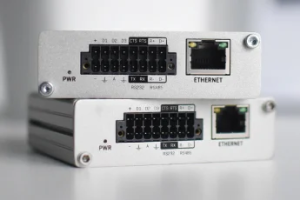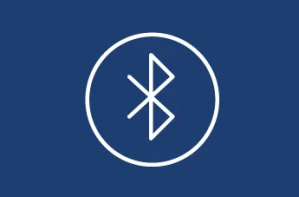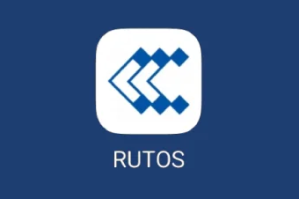
[: de]
Teltonika works hard every day to make RutOS more functional, safer and more user-friendly. At the end of May they will release the new firmware version, which will contain many new functions. With the release of RutOS v2.3 you are taking an important step towards optimization, effectiveness and usability in the entire network solution portfolio.
You can download the latest firmware from the Teltonika Wiki RutOS database.

 I / O juggler
I / O juggler
This is a big advancement in I / O element management when you have no limits on what conditions need to be defined. Previously, you could send text messages or emails, change the router profile, or activate an output when you change the status of an I / O element. With the RutOS update including the I / O juggler functionality, you can now initiate any script for a router. There is also the option to write and upload your script which will be activated when the input value changes. You can use this feature to set many different rules. And if there is a precise sequence of actions at a certain point in time, an output is triggered. For example, if a construction worker on a construction site between 7:00 and 8:00 a.m. passes through a barrier with a sensor with his RFID card for identification, an output opens its locker door.
Separation of basic and advanced user profiles
In the IoT world there are many applications in which cellular routers or gateways are required. Some of them require broad functionality and strong technical skills, others only require WiFi or a basic configuration. Teltonika understands that there is no such thing as a typical network device user.
Some of their customers are the best talented engineers who work on delivering connected IoT solutions in mission-critical applications. On the other hand, Teltonika is thrilled that their products also attract newcomers. They may be using their connectivity devices to improve their lives or launch their first IoT solutions. For this reason, Teltonika has divided its WebUI into two different tabs – differentiated according to user competence. One is best for making major changes and configurations to the device. Another has a full feature list for the progressive user. This change strengthens and reflects one of Teltonika’s main focus areas for product development – creating devices that are easy to use. They made these UI enhancements because they wanted to keep the broad functionality and full access to complex features while still being easy to configure.
Basic and Advanced menu tabs show the biggest difference in the Network tab. LAN / WAN is already set up in the “Basic” settings profile and you cannot change this setting. On the other hand, you can remove or change these settings in the “Advanced” settings profile. In addition, the Advanced tab offers the option of configuring VLAN, DNS and routing functions.
 Data sender functionality
Data sender functionality
Almost a year ago, Teltonika introduced its new RUTX series routers, which have expanded their options for wireless connectivity types. The Bluetooth functionality of the RUTX10 & RUTX11 has opened up the possibility of connecting them to many different sensors such as temperature, humidity, pressure and more. With the data sender function, you now have the option of capturing all parameters, storing them on the server of your choice and using the JSON syntax to send them remotely to your cloud if necessary. Based on this syntax, you can select the desired cloud and adapt it to your requirements in order to visualize the parameters recorded and sent by the Teltonika routers. This opens up unlimited bluetooth-based possibilities IoT -Integrate solutions in cellular and WiFi connectivity.
 Progressive Web Apps (PWA)
Progressive Web Apps (PWA)
Today everyone is trying to use their time more efficiently by finding new ways to optimize the workflow. For this reason, Teltonika created a PWA – Progressive Web App Functionality. With PWA, you can access your router’s WebUI from your smartphone or computer by simply clicking an app shortcut on your home screen or desktop. This app link is generated by linking the address of your router’s WebUI. This way, you don’t have to manually write the IP address in your browser when you want to connect to the router’s WebUI.
[hr]
[row]
[span6]
If you have any questions or need help with the update, don’t hesitate to contact us.
[/span6]
[/row]
[hr]
If you have any further questions about the update, we will be happy to call you back.
[contact-form-7 id=”3390″ title=”Callback Teltonika Post 6307″][: en]
Each and every day, Teltonika is working hard to make RutOS more functional, more secure, and easier to use. End of May they will be releasing the new firmware version which will include many new features. With the release of RutOS v2.3, they are taking a vital step towards optimization, effectiveness, and utility across the networks solutions portfolio.
You can download the latest firmware from Teltonika’s Wiki RutOS database.

 I / O juggler
I / O juggler
This is a massive development in I / O element management when you have no boundaries what conditions to define. Before, you could send SMS, email, change router profile or activate an output upon the change an I / O element’s status. Now with the RutOS update including I / O Juggler functionality, you will be able to initiate any script to a router. Also, there’s a possibility to write your script and upload it, which will be activated when the input value changes. Using this functionality, you can set many different rules. And if an exact sequence of actions happens at a precise time, then it triggers an output. For example, on construction sites, if the construction worker goes through a barrier with a sensor between 7:00 and 8:00 AM using his RFID card for identification, then an output opens his locker doors.
Separation of Basic and Advanced user profiles
There are many applications in the world of IoT where cellular routers or gateways are needed. Some of them require broad functionality and strong engineering skills, but some require only WiFi or basic configuration. Teltonika understands that there is no typical networks device user.
A part of their clients are the brightest engineering talents, working in providing connected IoT solutions in mission-critical applications. On the other hand, they are thrilled that their products attract entry-level users as well. They might be utilizing their connectivity devices to improve their lives or kick-start their first IoT solutions. For this reason, Teltonika divided their WebUI into two different tabs – differentiated by user competence. One will be the best fit for essential modifications and configurations of the device. Another one will have a full functionality list for the power user. This change strengthens and reflects on one of Teltonika’s key focus areas for product development – creating devices that are easy to use. They made these UI improvements because they want to keep the broad functionality and full access to complex features while offering simple configuration at the same time.
Basic and Advanced menu tabs will show the biggest difference at the Network tab. On the “Basic” setting profile, you will already have LAN / WAN set-up, and you will not be able to change it. On the other hand, you will be able to remove or amend those settings the “Advanced” setting profile. Furthermore, the Advanced tab will offer a possibility to configure VLAN, DNS, routing functionality.
 Data sender functionality
Data sender functionality
Almost a year ago, Teltonika introduced their new RUTX series routers, with which they have expanded their wireless connectivity type options. The Bluetooth functionality that can be found in RUTX10 & RUTX11 has opened a possibility to connect them to many different sensors, like temperature, humidity, pressure, and more. Now, with Data Sender functionality, you will have a chance to collect all the parameters, store them in the server of your choice and send them remotely to your cloud using JSON syntaxis when you will need them. Because of this syntaxis, you can choose whatever cloud you want and adapt it to your needs to visualize the parameters collected and sent by Teltonika’s routers. This opens up limitless possibilities to integrate Bluetooth based IoT solutions with cellular and WiFi connectivity.
 Progressive Web Apps (PWA)
Progressive Web Apps (PWA)
Nowadays, everybody is seeking to use their time more efficiently by finding new ways how to optimize the workflow. Because of this, Teltonika created a PWA – progressive web app functionality. PWA enables a possibility to reach your router’s WebUI from your smartphone or computer by simply clicking on an app shortcut in your home screen or desktop. This app shortcut will be generated by linking the address of your router’s WebUI. In this way, you will not need to manually write the IP address in your browser when you want to connect to the router WebUI.
[hr]
[row]
[span6]
If you have questions or need assistance with the update, do not hesitate to contact us.
[/span6]
[/row]
[hr]
We are happy to call you back for further questions about the update.
[contact-form-7 id=”3390″ title=”Callback Teltonika Post 6307″][:]

